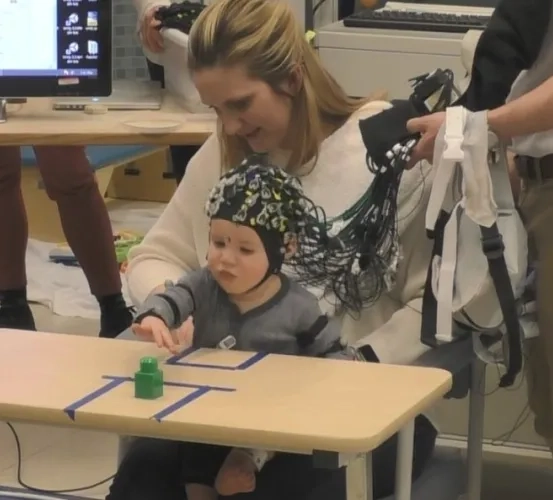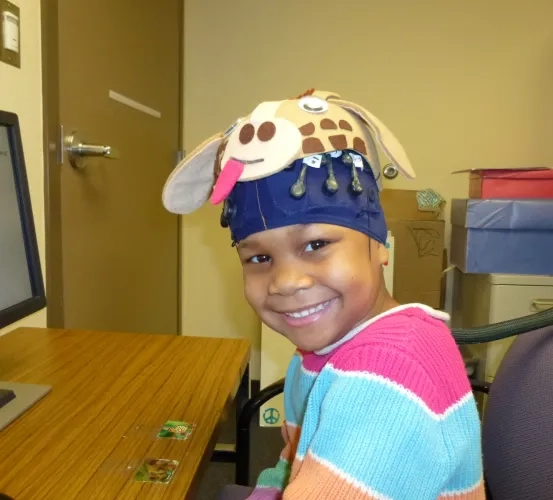
Near-infrared Spectroscopy and Electroencephalography to Assess Cortical Activation During Motor Tasks in Infants and Toddlers with or at high-risk for Cerebral Palsy and Autism Spectrum Disorder Compared to Infants and Toddlers with Typical Development

Cerebral Palsy and the Study of Brain Activity During Motor Tasks
Researchers at the National Institutes of Health (NIH) seek participants age five and older with childhood-onset brain injury (e.g.,cerebral palsy) to join a research study. Near-infrared spectroscopy (NIRS) and/or electroencephalography (EEG) may be used to study brain activity. Learning how the brain controls muscles may help design treatments to help patients with brain injury to move better.

Infant Research Opportunity
Researchers at the National Institutes of Health (NIH) are studying how infants' brains change as they learn new motor skills. Results may assist with better treatment methods for Cerebral Palsy.

